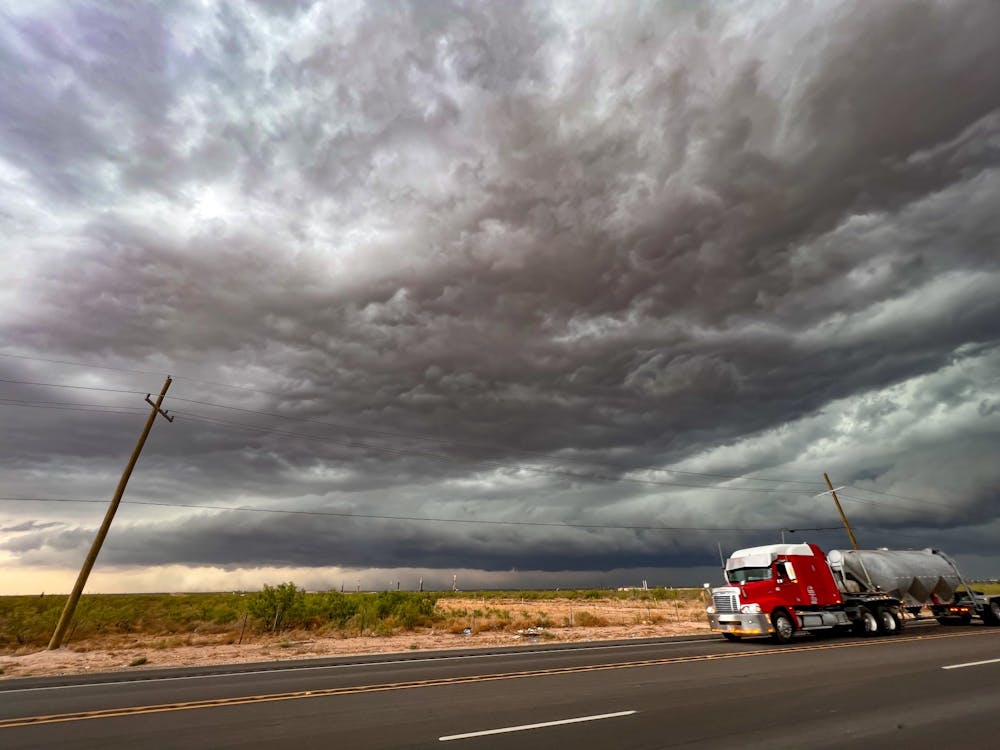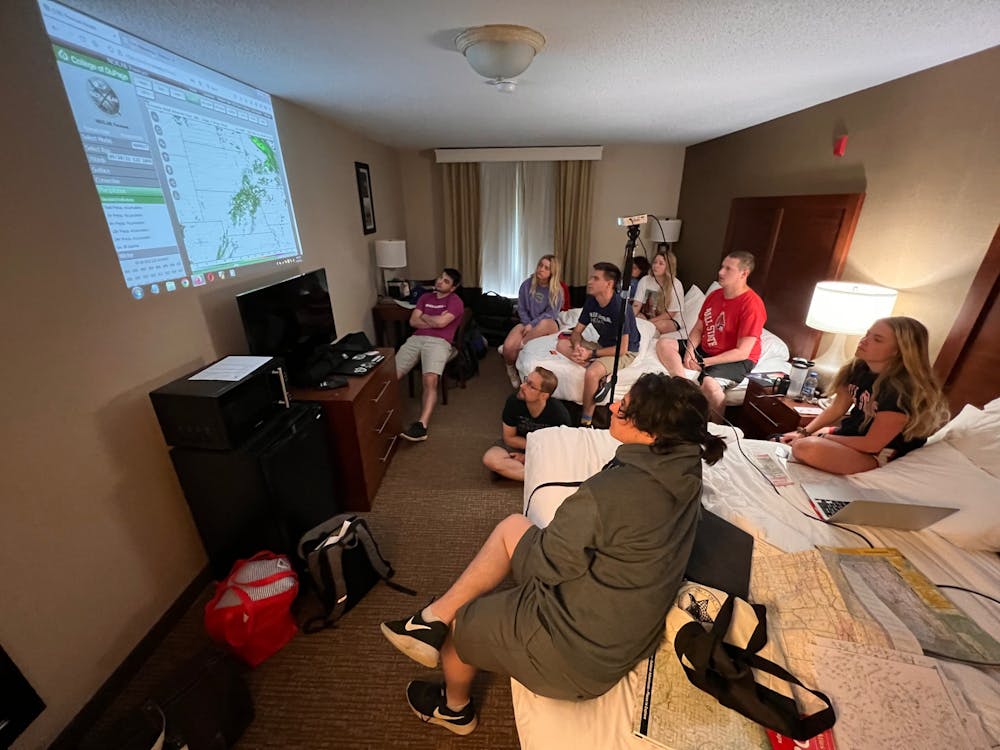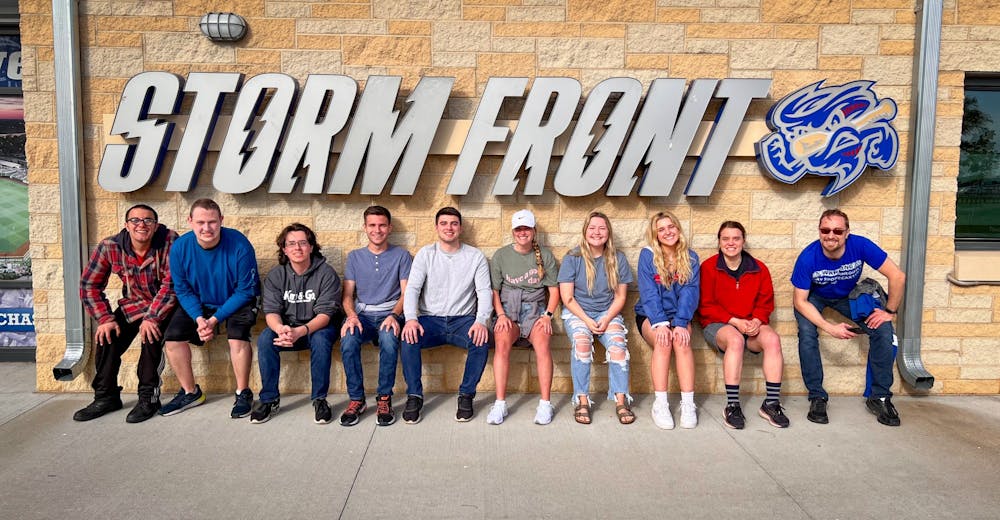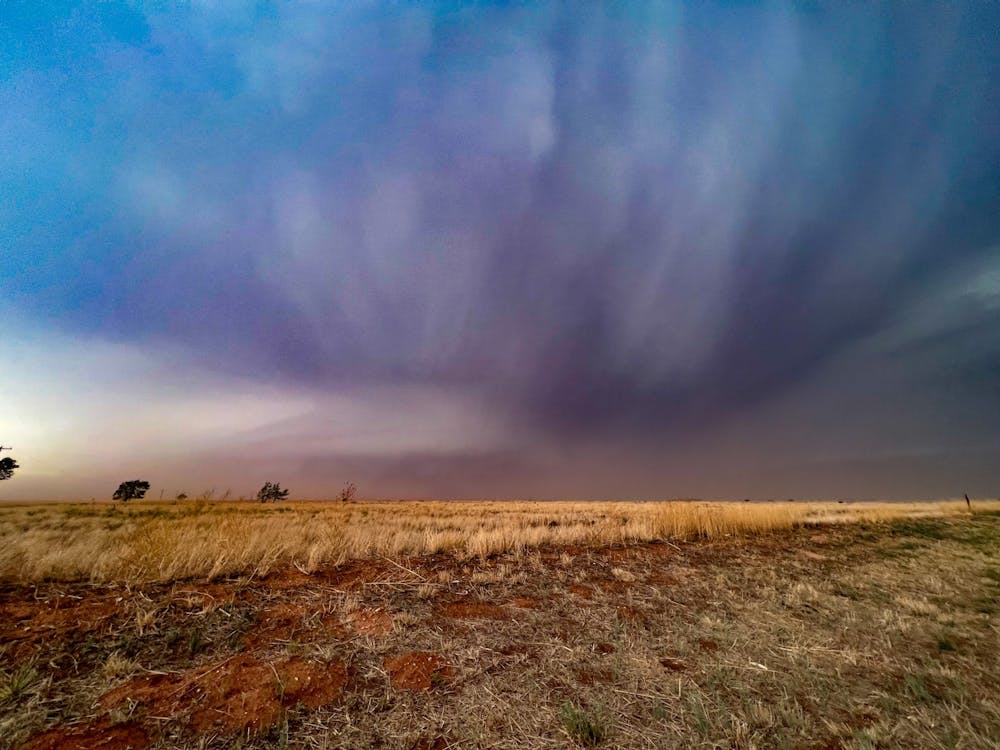Weather enthusiasts have risen to a whole new level as storm chasing becomes of interest to many around the globe.
Storm chasers love the uncertainty of the atmosphere; they love to observe the natural gifts that Mother Nature brings them. Whether the goal of their observations is for research purposes or for pure enjoyment, storm chasers consistently have an objective of discovering new things the weather carries in for them.
At Ball State, there are many opportunities for students interested in storm chasing. Taught by Assistant Professor of Geography David Call, METC 490 is a six-credit course that is open to all students on campus who’re interested in learning the basics of storms and how to safely observe storms in a classroom setting. After the basics are grasped, participants then load up vans to inspect storms for two weeks.
“We go where the winds take us,” Call explained. “We have chased everywhere from the Canadian Border to the Rio Grande. And we basically go from The Rocky Mountains to the Eastern Great Plains. Occasionally we might try to chase in Minnesota or Iowa or even Missouri, but we don’t have great luck in those states, so we tend to stick to the Great Plains states. So North Dakota, South to Texas and The Rocky Mountains.”
When preparing for these major trips, students are trained to use non-technology-based equipment in order to increase their efficiency in finding storms.
“You’re in the middle of nowhere, so sometimes your phone’s not going to work to look at radars,” student Hunter Luzadder said. “You need to learn how to actually maneuver roads without a GPS.”
Naturally, in this day and age, learning how to navigate the country without technology seems nearly impossible, but students thoroughly enjoyed being educated on the subject.
“It was really cool because I got to learn along the way how to actually read a map because not many adults in our generation know how to read an actual map,” Luzadder said.
Searching for the right storm can lead to a mass amount of uncertainty with the weather constantly changing. Chasers might be in one location ready to watch a storm, but then have to immediately pack up and travel to a completely different one.
“We initially come up with a target location, it might be a specific region like Southeast Nebraska,” student Camryn Leatherman said. “From there, we’ll need to find somewhere to sit and hang out until convection begins to initiate in the atmosphere. So we might go to a city and we’ll just hang out and we’ll keep an eye on the radar and if something should change, because the atmosphere is completely unpredictable on days like this, we might have to look at the radar and go ‘Okay, things are firing up to our north, we might have to turn around and go back north.’ And we’ll end up staying in a different city for a while.”
But of course, the major objective of these excursions is watching, analyzing and documenting storms.
“We’ve caught storms that have had amazing structure and just look beautiful, things you’d want to frame and put on your walls,” Call said. “We’ve had other storms where the storms look sort of crummy, but hey, there’s a tornado in front of us or even a long-lived tornado, so those have been pretty exciting. It’s tough to explain to people that haven’t been there, but once you’re out there, there’re so many amazing aspects of storms to see. There are all sorts of amazing things to appreciate. And each storm is a little different.”
Ultimately, storm chasing is an extremely rewarding experience that feels like no other.
“You have to experience it,” Leatherman said. “I’ve never experienced anything quite like standing in front of thunderstorms like that, where the winds are pushing so hard against you that they might knock you over if the gust picks up. There’s no other feeling like it on Earth.”










The Daily News welcomes thoughtful discussion on all of our stories, but please keep comments civil and on-topic. Read our full guidelines here.